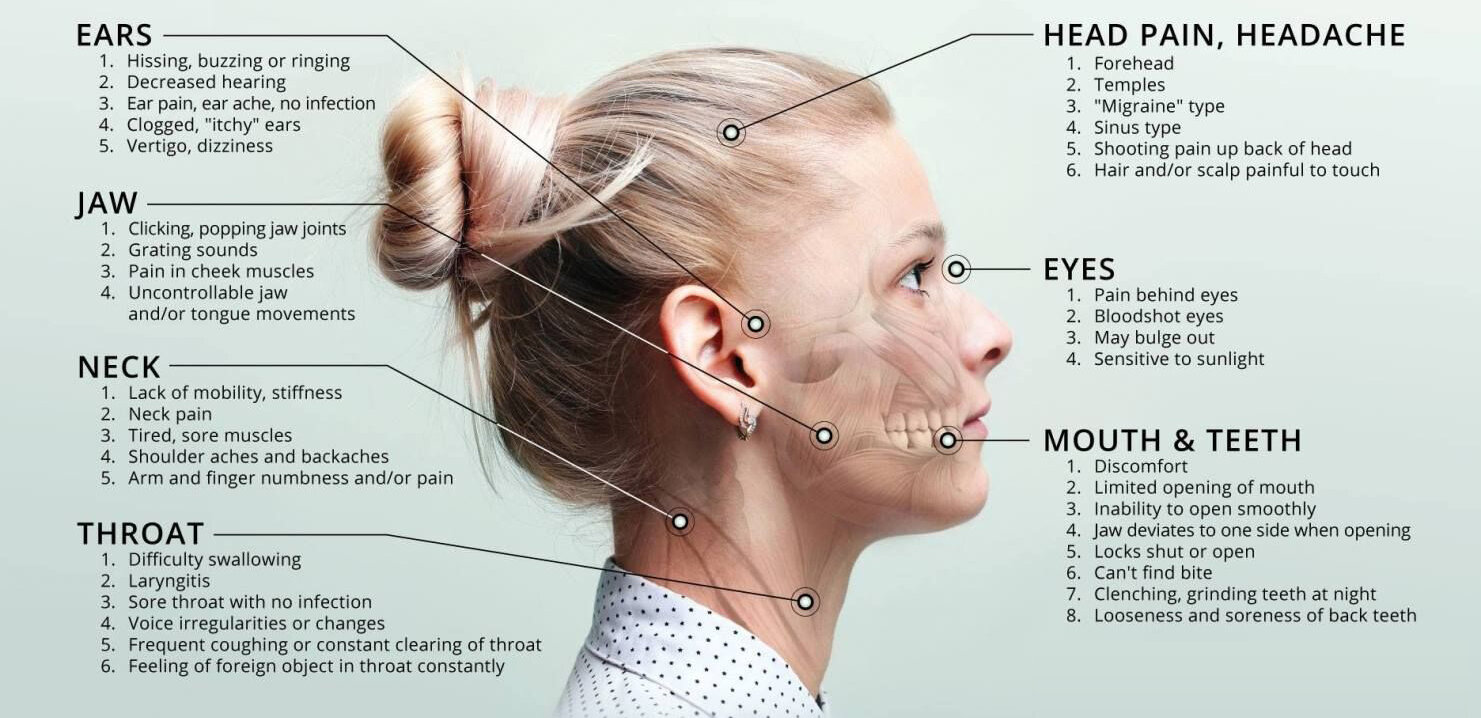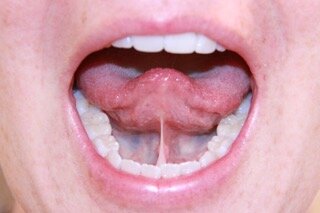
Tongue Tie Adults
Tongue Tie
The lingual frenum is the tethered tissue that stretches from under the tongue to the floor of the mouth. Everyone has a lingual frenum tissue but in some cases it is tighter and/or shorter. A restrictive tethered tissue attachment can restrict the movement of the tongue as well as prevent it from resting in the correct place on the palate. Lips can be tied as well and should be checked during an examination.
People who are tongue tied often mouth breath so they can experience a variety of myofunctional symptoms and problems such as: chronic jaw pain, facial pain, headaches, clenching and grinding. Tongue tie, Restricted Frenum and Ankyloglossia are terms often used when a tight frenum is present.
A tongue tie affects the tongue posture. It brings the tongue down, which then causes turbulence of air flow and makes it more likely for you to become a mouth breather. Mouth breathing perpetuates local inflammation, tonsillar/adenoid enlargement and further nasal resistance.
When you have a low tongue posture, you may be compensating by pushing your head forward, which can contribute to headaches and jaw pain, neck and shoulder tension, clenching and grinding and snoring.
Tongue restrictions are quite often undiagnosed and go undetected.

How Can we Help?
When someone has a tongue restriction, they may be required to have their frenum released through a simple surgical procedure called a frenectomy. This is part of my examination, where I assess every patient for a tongue-tie, and confirm whether or not the procedure would be beneficial. It is important to understand that it is not just about the frenum appearance it’s about the tongue function. Some people may present with a tongue tie restriction but have learned to get around the restriction without exhibiting any issues. Releasing the tongue tie makes it easier for you to sustain good oral habits.
If surgery is recommended, it is critical to perform a series of exercises before and after the procedure in order to receive the best results. Patients are given specific exercises to practice in the weeks leading up to the surgery, and then continue with exercises to strengthen the oral muscles.
What is a Frenectomy?
A frenotomy/frenulotomy is a simple incision into the connective tissue at the bottom of the tongue to free the tongue from the floor of the mouth. This involves removing or altering the connective tethered tissue under the tongue.
In the majority of cases, the procedure is done using local anesthetic as general anesthetic is rare with this procedure.
The procedure is low risk and can be performed with a laser, a scalpel, or scissors. When it’s done by laser, no sutures are required. With a scalpel or scissors, sutures will be placed to help the wound heal. Wound healing usually takes a few weeks, although it may take longer. Pain is usually not a major factor and can be managed with mild painkillers. Optimal results are achieved through continuous stretches of the healing to prevent re-attachment.
Pre and post-operative myofunctional therapy exercises are critical for proper wound healing to restore full function.
PRE/POST FRENECTOMY CARE
Orofacial Myofunctional Therapy(OMT) helps to ensure that your tongue-tie release surgery (frenectomy) is successful. If you are tongue-tied, the muscles of your tongue have never been used properly, so even after the tongue tie has been surgically released, reattachment or poor muscle control of the tongue can occur. It is essential to complete a series of exercises and stretches before and after the procedure to rehabilitate the tongue, restore full function and prevent the frenum from healing back into its original place.
Myofunctional Therapy should begin at least 8 weeks before your procedure is scheduled for best results.
Have you had a tongue tie release that was unsuccessful?
So many people have had the surgery done but are unhappy with the results because the muscles in the tongue may not have been strengthened properly. These muscles need to be activated through myofunctional therapy to help prevent the tongue from healing back into its original place.
Healing of a frenectomy can be limited if you do not have enough tongue space present. In the event of this, an expansion of the jaw may be recommended by your Orthodontist.




